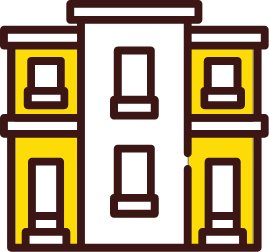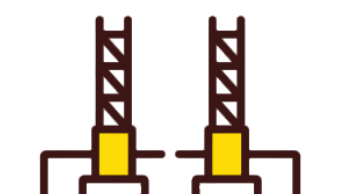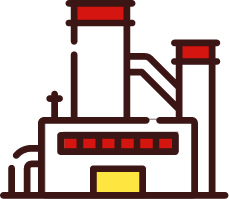Founded in 1986, A-Plus Foundation Repair Company has steadily built a strong reputation for groundbreaking foundation repair solutions coupled with an uncompromising level of quality and highly efficient customer support.
Foundation Problems?
We have the Solution!
Residential Services

Other Services


Commercial Services
If you suspect your commercial property is suffering from foundation damage, don’t wait until the problem gets worse. Contact A-Plus to get a Free evaluation of the damage and an estimate on the needed repairs. After nearly half a decade in the industry, we have helped thousands of clients of all sizes achieve safer, lasting foundations.
The “Double 8” is installed by digging a “box” at each pier location to approximately 24 inches below the foundation’s perimeter beam. From there, a hydraulic drill is used to drill two separate shafts at differing angles either to rock or to a depth of 10 feet, whichever occurs first. Rocks and other obstructions encountered during digging or drilling are broken through so that true rock or a 10-foot depth below grade is reached.
These Piers become the platform upon which the home is lifted and supported.
A helical pier is a steel shaft with helices along the shaft, much like a screw. This is used to stabilize existing foundations that have shifted or to stabilize new construction that is being built on compromised soil.
Helical piers come in two different types, round shaft and square shaft. Round shaft piers are better for drilling straight down, as they are made to withstand compression. Square shaft piers are often installed at an angle to prevent bowing in the foundation or basement walls.
Helical piers are installed with large machines that essentially screw the piers into the ground until they reach load-bearing soil. The tops are then attached to the foundation footing with heavy, steel brackets.
Helical piers can be installed faster and cause less disruption of the soil around the house. To be installed properly, they should be engineered, taking into consideration weight load, soil conditions, required torque and optimum desired depth.
The concrete pressed piling is made up of concrete cylinders that are 6” in diameter and about 12” tall. These are pressed into the ground using a hydraulic ram that pushes against the weight of the house.
These are generally the quickest pier option. However, the piers may reach a point of total resistance before bedrock or load-bearing soil is reached. This may cause them to settle further which will lead to the need for more repairs. Further, underground obstacles, such as large rocks or hard clay formations may deflect the direction of the pressed stack.
The good news is, almost every foundation company installs this type of pier, so if your previous foundation company isn’t around to repair damage caused by further settling, A-Plus may be able to honor their warranty and help repair your foundation.
Generally speaking, pressed pilings may require frequent adjustments when soil conditions change as the top sections, pressed into the clay layer immediately below the foundation, may swell and fall with the surrounding soil. To reduce this probability, pressed pilings should be installed with either a steel cable or steel rebar down the center to “interlock” the sections.
Steel pressed pilings are pressed into the ground under the foundation using a hydraulic ram that pushes against the weight of the house.
Unlike concrete pressed pilings, each subsequent steel piling is interlocked with the previous one before being pressed into the ground.
The smaller size of the steel pressed pilings gives a much greater chance of reaching load-bearing soil or bedrock before we find total resistance. This makes teel pressed pilings a more expensive, but longer-lasting solution than using concrete pilings.
The negative to pressed steel pilings is that if they do NOT reach bedrock, they rely on the “skin friction” of a 2 ⅞ inch pipe under the pressure of a multi-ton concrete slab.

 Slab Foundation Leveling
Slab Foundation Leveling  Pier & Beam Foundation Leveling
Pier & Beam Foundation Leveling Foundation Irrigation Systems
Foundation Irrigation Systems Drainage Systems
Drainage Systems Pressure Grouting
Pressure Grouting  Flat Work
Flat Work  Rain Gutters
Rain Gutters  Root Barriers
Root Barriers